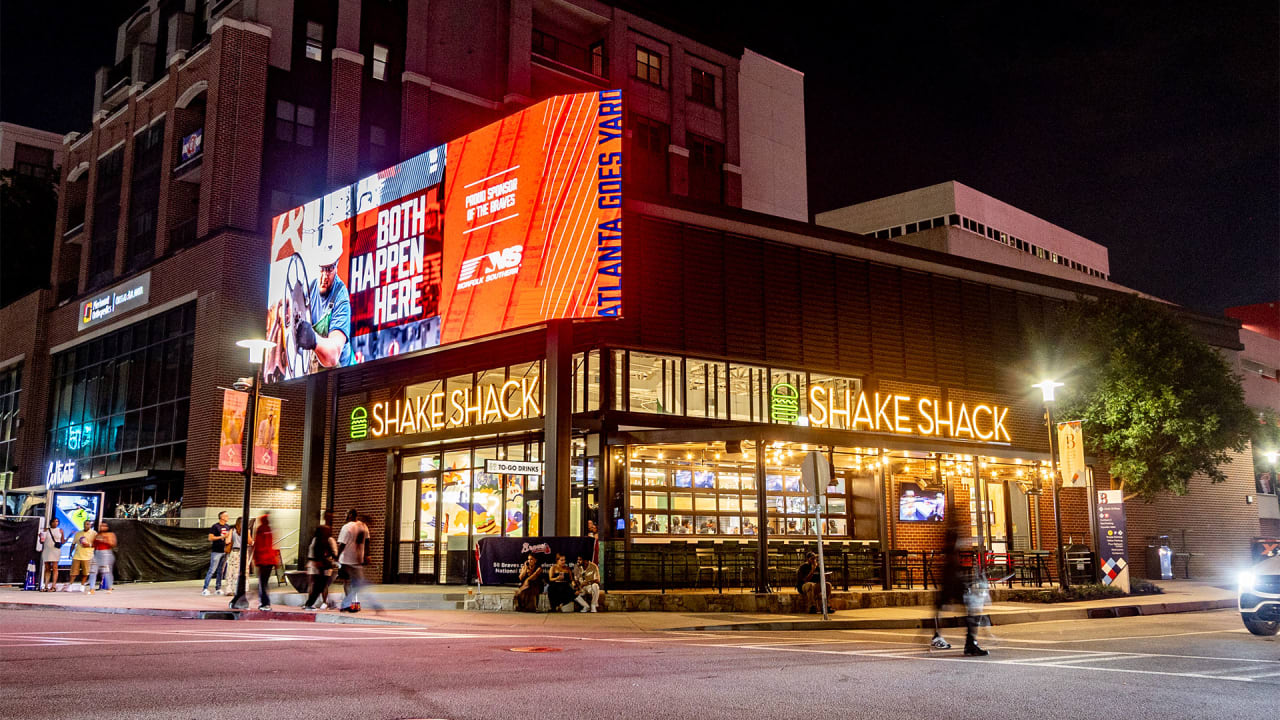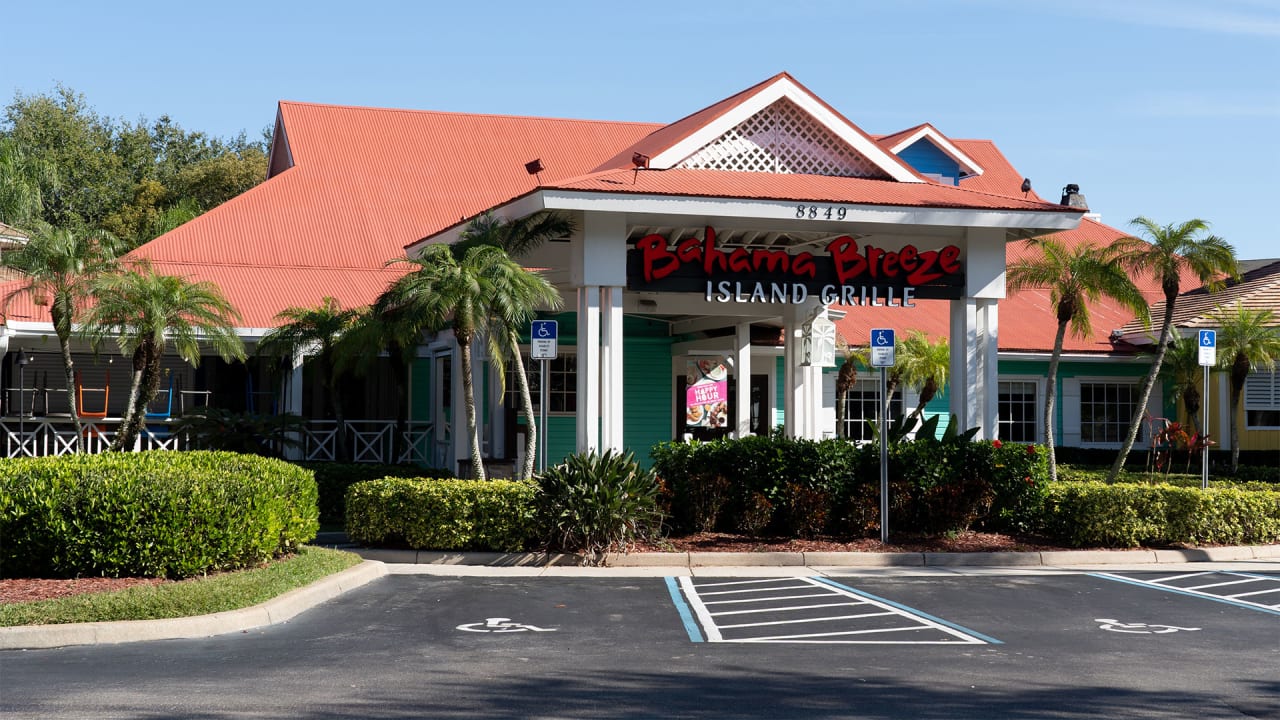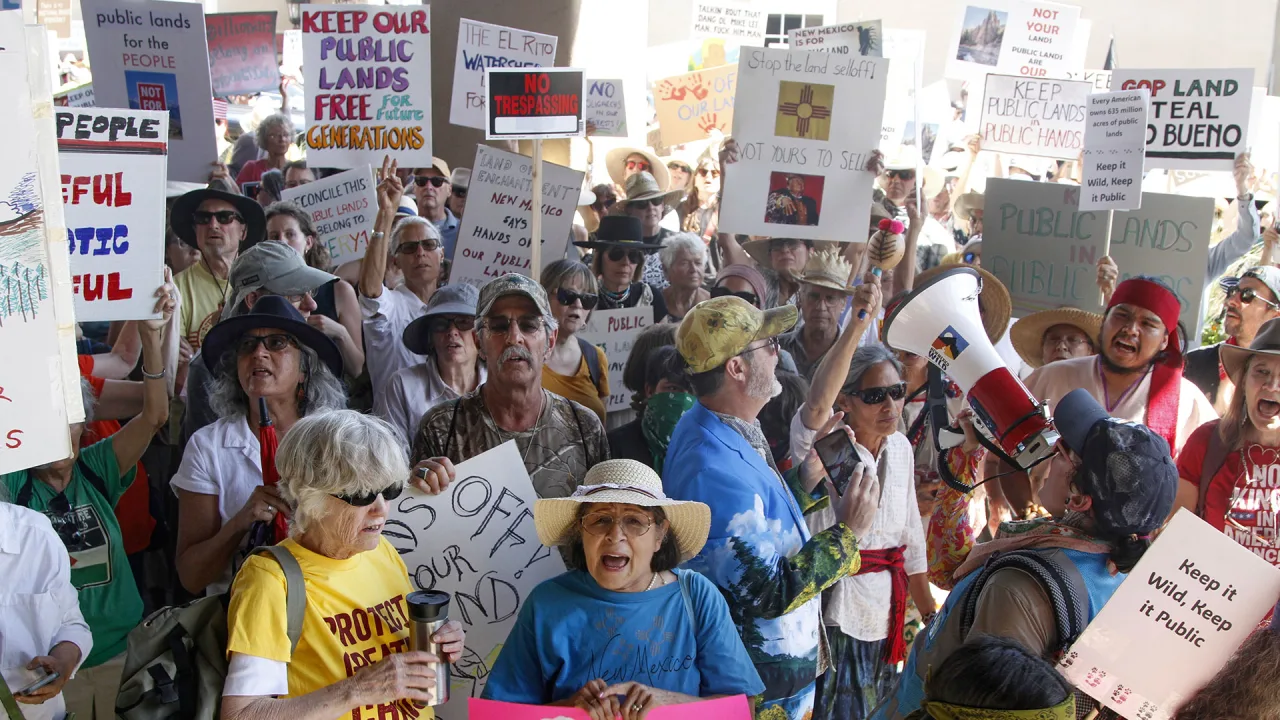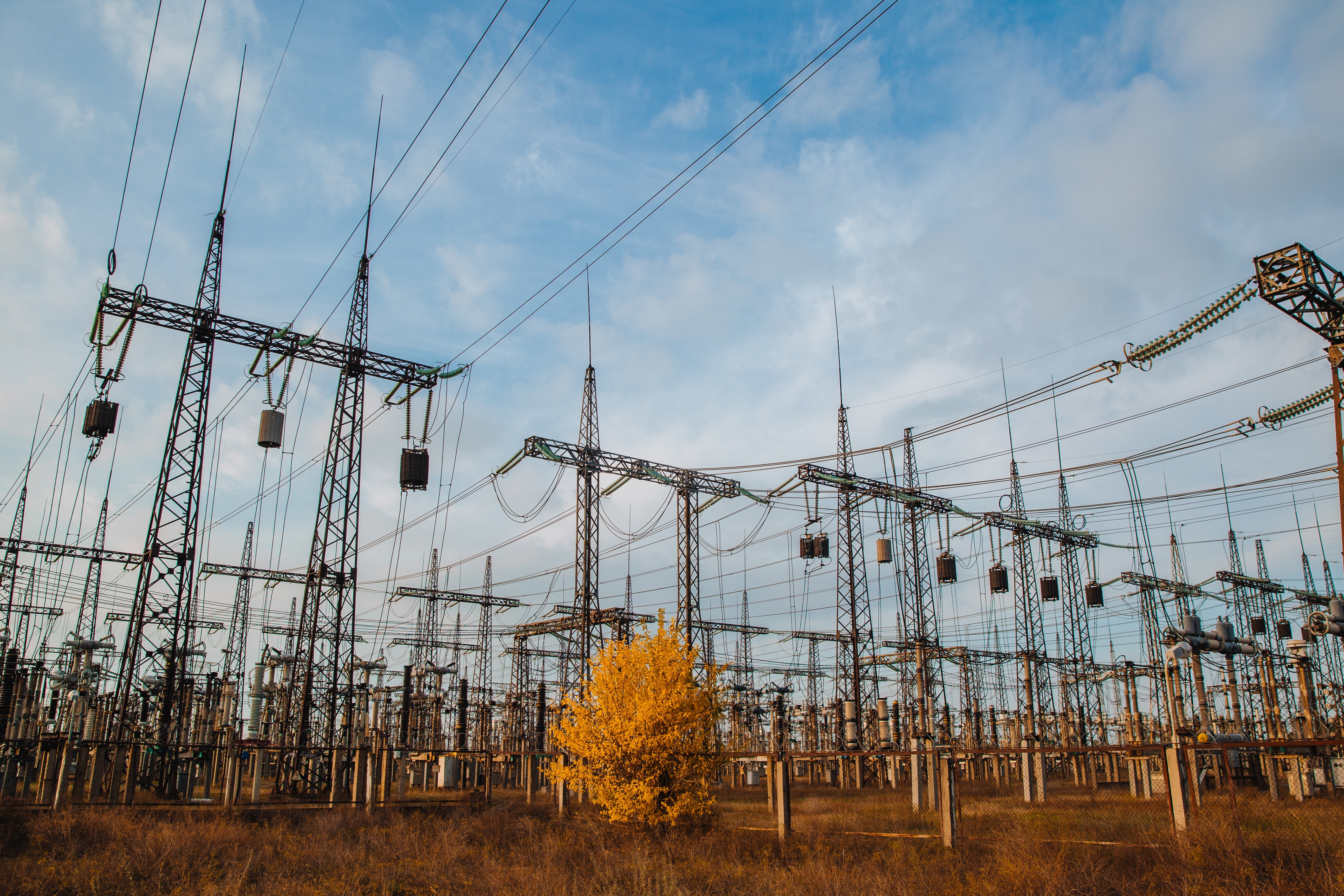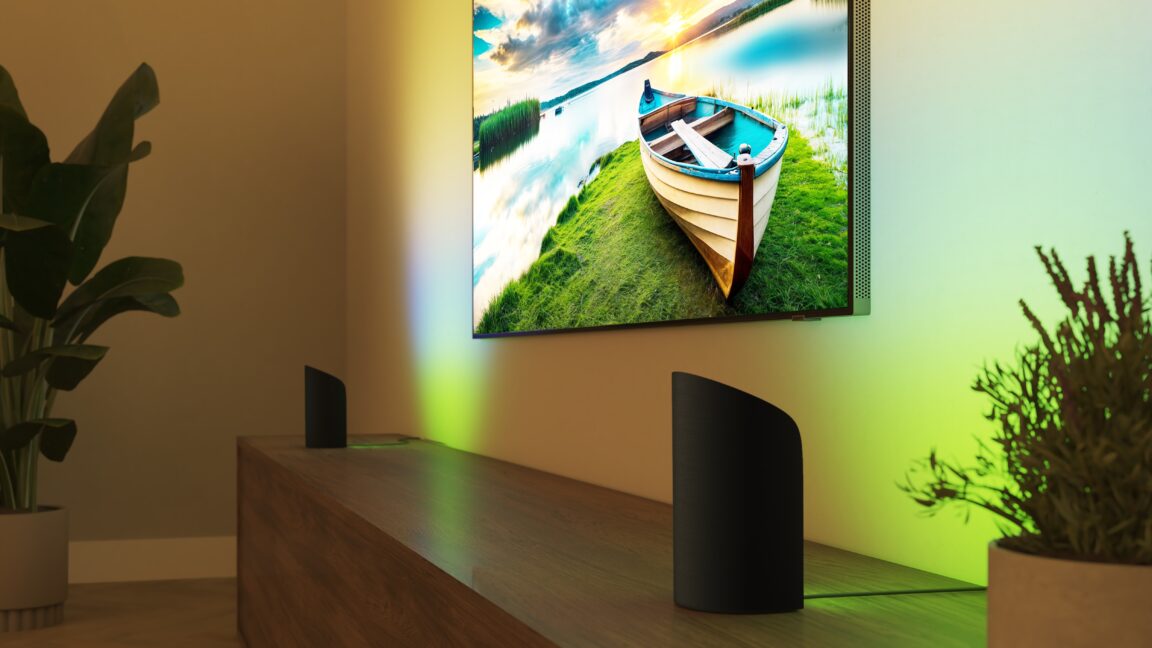College students are getting new neighbors on campus: Their grandparents
At colleges and universities across the country, older adults are roaming the quads. These are not emeritus professors or late-blooming freshmen, though. They’re residents, living in an increasingly common type of senior housing. A growing number of colleges and universities have started augmenting their campuses—and boosting their revenues—by building senior living facilities right alongside lecture halls and student dorms. Dozens of projects are either built or planned in and around campuses all over the U.S., from Stanford to Notre Dame to the University of Florida, providing a much-needed source of housing built specifically for the needs of older adults while creating new sources of revenue for colleges that are seeing their student enrollment numbers fall and their futures in doubt. They’re also creating a surprising social synergy between two demographic groups that don’t often mix: college kids and senior citizens. That unconventional pairing is becoming a draw for older adults, and making more universities think seriously about converting parts of their campuses from educational spaces to retirement communities. “In the past, maybe people would move to Florida and retire from society. But now people want to stay engaged and involved,” says Cynthia Shonaiya, a partner at the architecture firm Hord Coplan Macht (HCM), which has designed several senior housing projects on university campuses, sometimes known as university-based retirement communities. “Lifelong learning is something that is important to seniors nowadays.” Broadview at SUNY [Photo: Brian Lauer, Jeffrey Totaro Photography] One of the firm’s newest senior living projects is Broadview, located right across the quad from the administration buildings on the campus of the State University of New York’s Purchase College. The project includes 174 independent living apartments, 46 villas, 36 assisted-living residences, and 32 memory care suites. It’s anchored by a 10,000-square-foot building called the Learning Commons that features lecture halls, a performance space, arts studios, and a maker space that are all accessible to both residents and students. Each serves as a conventional gathering area for retired residents, but they’ve also become impromptu learning and teaching spaces, with projects led by both residents and students. “It’s symbiotic,” says Shonaiya. “You have to have a space where people come together that is intentional.” Broadview at SUNY [Photo: Brian Lauer, Jeffrey Totaro Photography] It’s also an attractive concept, particularly to people with a connection to the college. “As soon as we went to market, we saw so many ex-teachers and current teachers automatically sign up for units in the building,” says Chad Bederka, a principal at HCM. “Within the first 15 minutes, the largest units were gone.” Broadview is a $398 million development, arranged through a ground lease from the college to a third-party developer. As state-owned land, the deal was shaped by state legislation, which requires 75% of the proceeds to provide scholarships and 25% to support new faculty. The college receives $2 million in rent payments annually. The financial viability of such projects has caught the attention of university administrators across the country. Alejandro Giraldo, senior living practice leader at the architecture firm Perkins Eastman, says this project type has grown in popularity since emerging about 20 years ago, offering an unconventional source of revenue for higher education institutions. Broadview at SUNY [Photo: Brian Lauer, Jeffrey Totaro Photography] “In many cases, there’s not an option to sell the land because of endowments or because it’s a public school,” he says. “They’re asking what is the product that is going to help us fulfill our educational mission, maintain it, but also expand it and bring some revenue to the school.” Perkins Eastman is a firm that has specialized in senior living since its founding in 1981. In recent years, it has been hired to design more senior living projects on or adjacent to universities and colleges, including Vincentian Schenley Gardens, an assisted living facility next to Carlow University and the University of Pittsburgh. It’s a privately developed project that’s using its proximity to universities as a selling point. Other projects of this type are developed directly by universities and link senior residents to continuing education opportunities. Sometimes projects are led by third-party developers who emphasize the link to the universities’ programming and student population. “Every school has different approaches and strategies. That’s what is interesting about this. There’s no two that are the same,” Giraldo says. “Unless you have a very close partnership between the operator and the university, that is a recipe for disaster.” Vincentian Schenley Gardens [Image: courtesy Perkins Eastman] Drew Roskos is an associate principal in Perkins Eastm
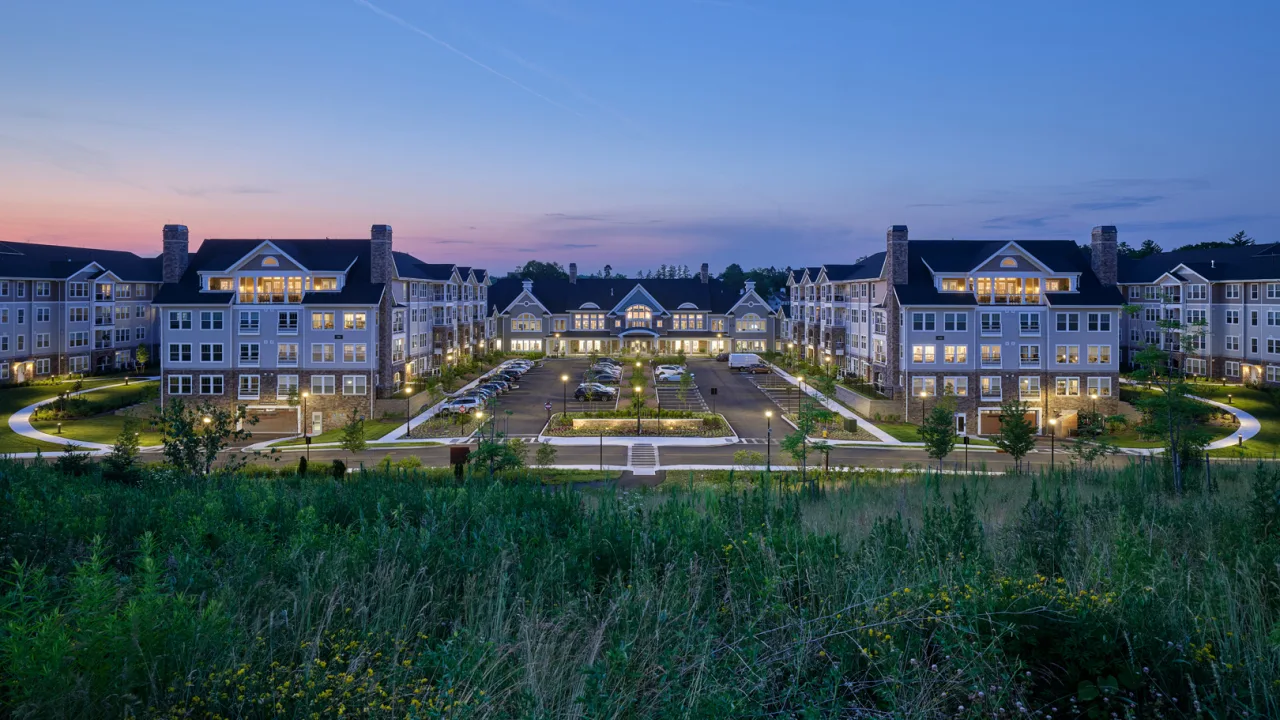
At colleges and universities across the country, older adults are roaming the quads. These are not emeritus professors or late-blooming freshmen, though. They’re residents, living in an increasingly common type of senior housing. A growing number of colleges and universities have started augmenting their campuses—and boosting their revenues—by building senior living facilities right alongside lecture halls and student dorms.
Dozens of projects are either built or planned in and around campuses all over the U.S., from Stanford to Notre Dame to the University of Florida, providing a much-needed source of housing built specifically for the needs of older adults while creating new sources of revenue for colleges that are seeing their student enrollment numbers fall and their futures in doubt. They’re also creating a surprising social synergy between two demographic groups that don’t often mix: college kids and senior citizens.
That unconventional pairing is becoming a draw for older adults, and making more universities think seriously about converting parts of their campuses from educational spaces to retirement communities.
“In the past, maybe people would move to Florida and retire from society. But now people want to stay engaged and involved,” says Cynthia Shonaiya, a partner at the architecture firm Hord Coplan Macht (HCM), which has designed several senior housing projects on university campuses, sometimes known as university-based retirement communities. “Lifelong learning is something that is important to seniors nowadays.”
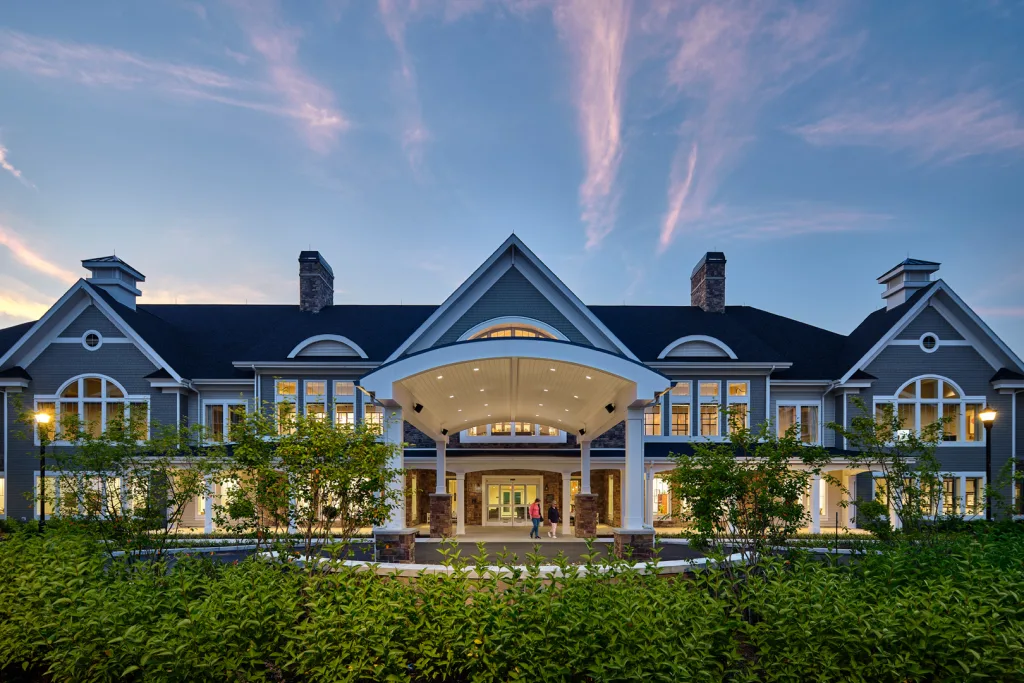
One of the firm’s newest senior living projects is Broadview, located right across the quad from the administration buildings on the campus of the State University of New York’s Purchase College. The project includes 174 independent living apartments, 46 villas, 36 assisted-living residences, and 32 memory care suites. It’s anchored by a 10,000-square-foot building called the Learning Commons that features lecture halls, a performance space, arts studios, and a maker space that are all accessible to both residents and students. Each serves as a conventional gathering area for retired residents, but they’ve also become impromptu learning and teaching spaces, with projects led by both residents and students. “It’s symbiotic,” says Shonaiya. “You have to have a space where people come together that is intentional.”
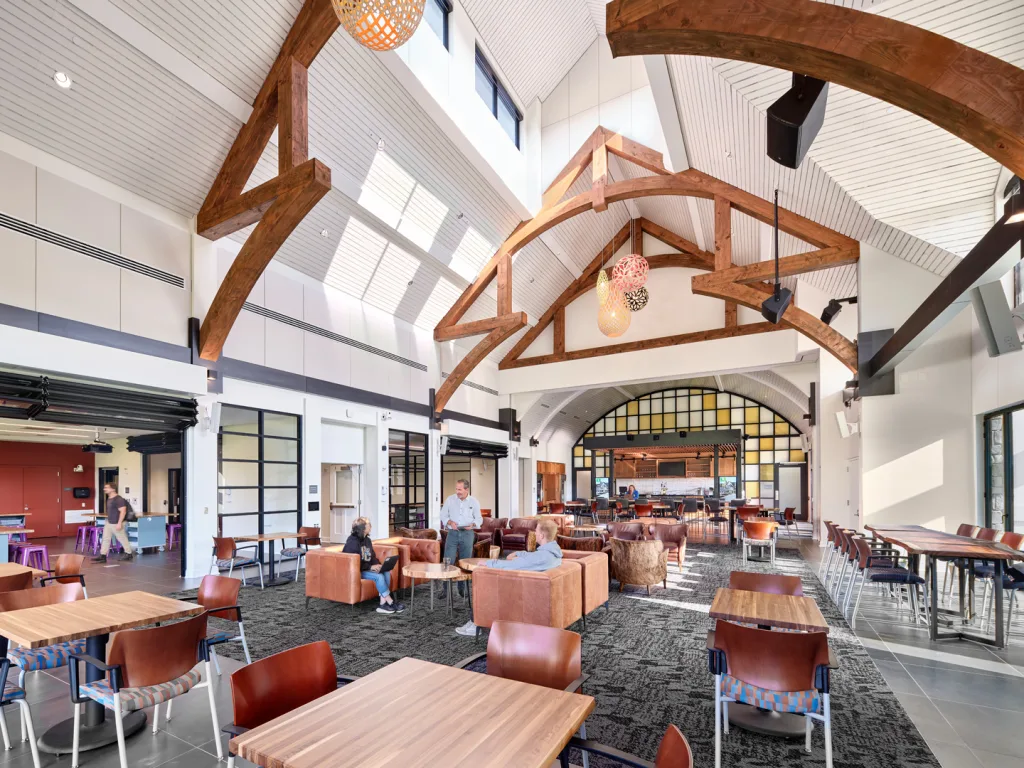
It’s also an attractive concept, particularly to people with a connection to the college. “As soon as we went to market, we saw so many ex-teachers and current teachers automatically sign up for units in the building,” says Chad Bederka, a principal at HCM. “Within the first 15 minutes, the largest units were gone.”
Broadview is a $398 million development, arranged through a ground lease from the college to a third-party developer. As state-owned land, the deal was shaped by state legislation, which requires 75% of the proceeds to provide scholarships and 25% to support new faculty. The college receives $2 million in rent payments annually.
The financial viability of such projects has caught the attention of university administrators across the country. Alejandro Giraldo, senior living practice leader at the architecture firm Perkins Eastman, says this project type has grown in popularity since emerging about 20 years ago, offering an unconventional source of revenue for higher education institutions.
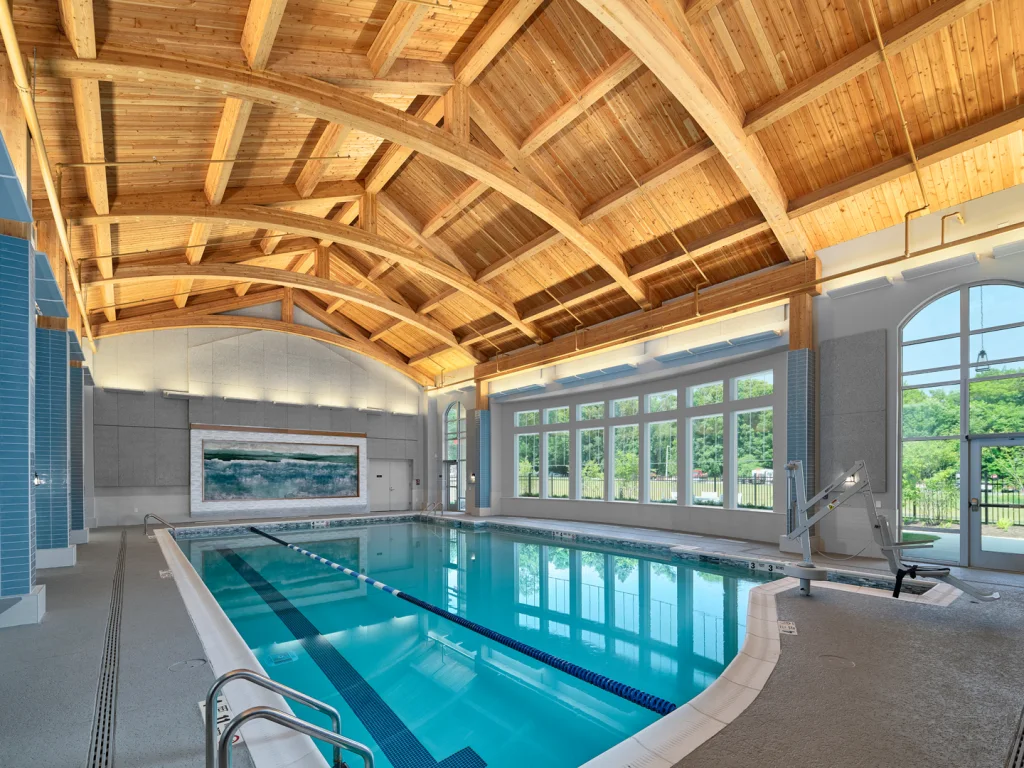
“In many cases, there’s not an option to sell the land because of endowments or because it’s a public school,” he says. “They’re asking what is the product that is going to help us fulfill our educational mission, maintain it, but also expand it and bring some revenue to the school.”
Perkins Eastman is a firm that has specialized in senior living since its founding in 1981. In recent years, it has been hired to design more senior living projects on or adjacent to universities and colleges, including Vincentian Schenley Gardens, an assisted living facility next to Carlow University and the University of Pittsburgh. It’s a privately developed project that’s using its proximity to universities as a selling point.
Other projects of this type are developed directly by universities and link senior residents to continuing education opportunities. Sometimes projects are led by third-party developers who emphasize the link to the universities’ programming and student population. “Every school has different approaches and strategies. That’s what is interesting about this. There’s no two that are the same,” Giraldo says. “Unless you have a very close partnership between the operator and the university, that is a recipe for disaster.”
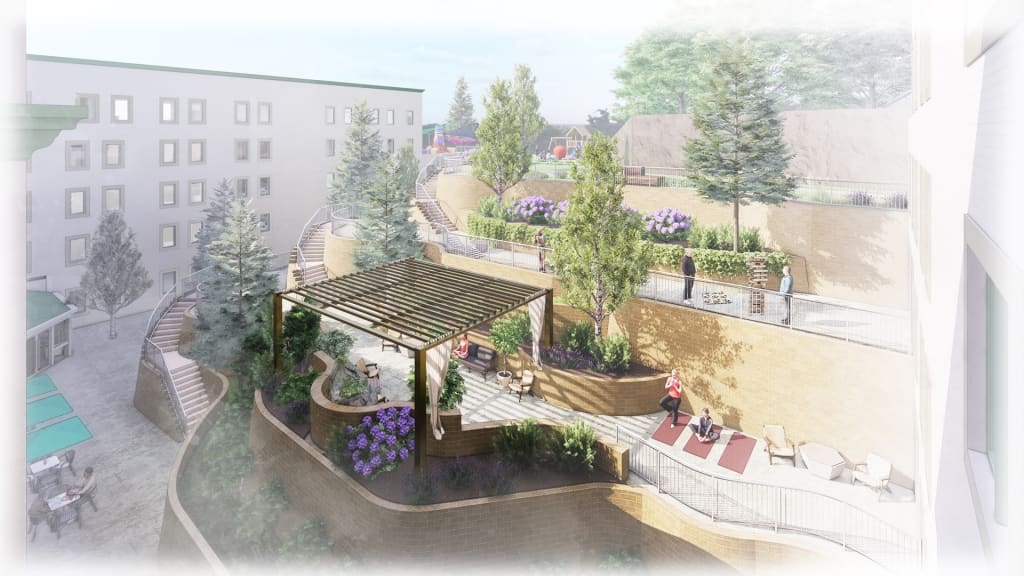
Drew Roskos is an associate principal in Perkins Eastman’s senior living studio, and in addition to being an architect, he has a master’s degree in gerontology. He says senior housing at universities works best when projects create an active connection between the residents and the university. That can take the form of an assisted living facility that partners with a university’s nursing program, or an active adult community that has programming tied directly to classes or curricula. Being on a campus helps make those connections even stronger. “The closer the proximity, the more rich and more meaningful the relationship can be,” Roskos says.
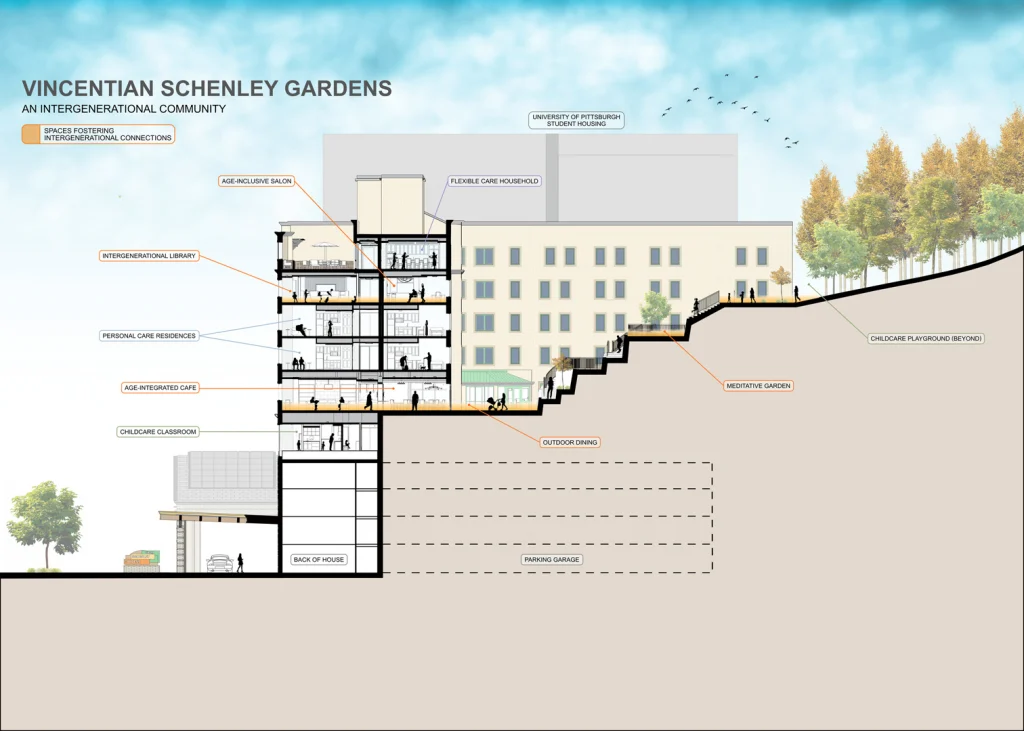
Building connections between residents and students is also a goal, and one that’s of increasing concern. In 2023, the Surgeon General put out a major report highlighting the negative health and social consequences of isolation and loneliness. Older adults are particularly vulnerable, according to the report, but so are young people. “The idea of having seniors moving to a community that’s on a college campus, with young adults who can mentor them, and they can learn from each other, I think it has significant social benefits,” says Shonaiya.
When designing these projects, Shonaiya says architects and senior housing providers must consider what types of amenities they need to include to forge better connections between residents and a university’s students and programs. Some things are already built into a typical college campus, like dining halls, performance venues, and craft-centric spaces like woodshops, and senior housing projects can piggyback off their close proximity. But some facilities built for 20-year-old college students won’t meet the physical needs of older adults, so amenities like a swimming pool or a nearby restaurant are often added. “It’s a balance of what can be shared, what is accessible, and what needs to be duplicated so that it remains convenient for the seniors,” Shonaiya says.

Other design considerations include general accessibility requirements like short walking paths between residences and university amenities, wide hallways, brighter lighting, and interior color schemes that don’t create jarring contrasts. Shonaiya says the Learning Commons at Broadview required special attention to acoustics in order to ensure older users are able to hear and participate in lectures and classes held in the space. “All of those aspects are baked into the design, but in such a way that the students don’t feel like they’re coming into a nursing home,” she says.
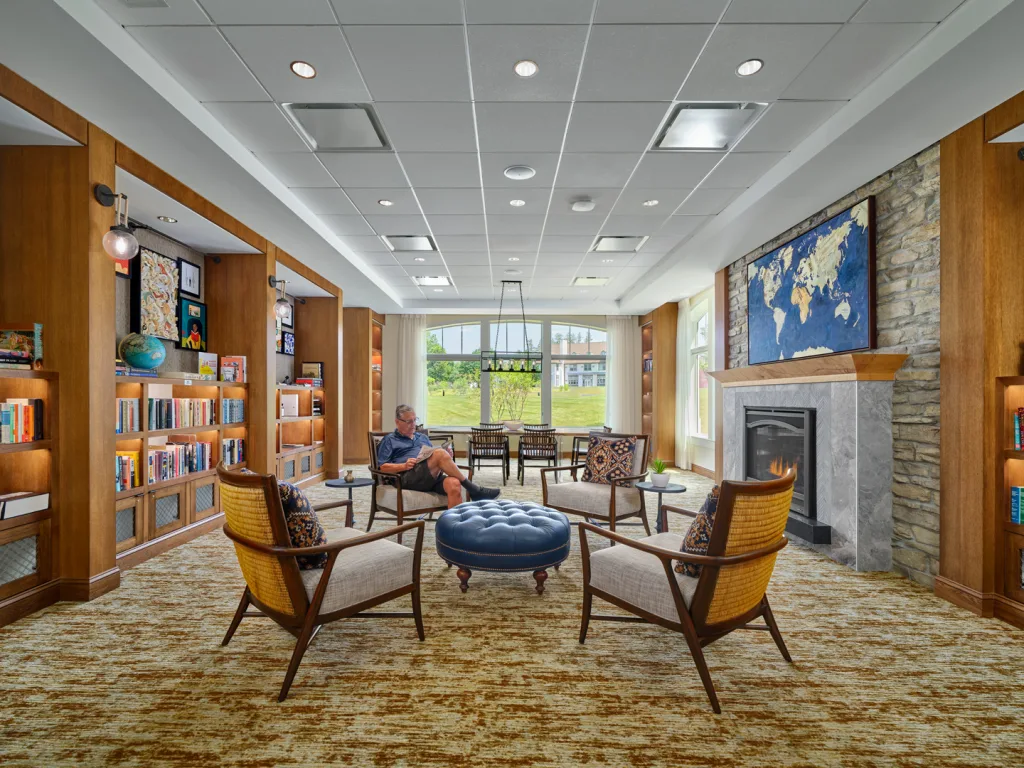
The projects also need to fit into the surrounding campus, which can sometimes be difficult. Bederka says the Broadview project at Purchase College was added to a campus made largely of concrete brutalist buildings designed in the 1950s and ’60s. “Trying to integrate a senior living community into a brutalist design was very challenging,” he says. Instead of mimicking the campus aesthetic, the designers looked to the surrounding community and designed the project to reflect the Georgian-style buildings in the area and the campus’s roots as former farmland.
These projects work best when they embody the unique character of the university they’re associated with, says Roskos, noting, “You need to find the story that’s behind the relationship. It’s really a reflection of what the university campus feels like. It’s got to operate as a business, but it should be cohesive with its environment.”











![What Is a Markup Language? [+ 7 Examples]](https://static.semrush.com/blog/uploads/media/82/c8/82c85ebca40c95d539cf4b766c9b98f8/markup-language-sm.png)







































